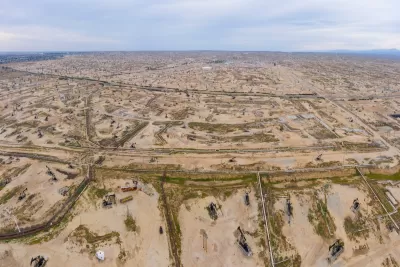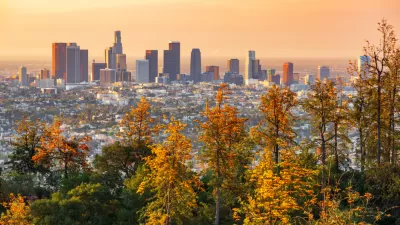Kern County supervisors voted to support a carbon storage project that will inject climate-warming gases into a former oil and gas field.

California’s Kern County approves the state’s first project that will attempt to bury climate-warming gases underground in an effort to limit the amount of emissions that go into the air, according to an article from CALmatters.
“The project by California Resources Corp., the state’s largest producer of oil and gas, will capture millions of tons of carbon dioxide and inject it into the ground in the western San Joaquin Valley south of Buttonwillow,” the article explains. “California Resources Corp. plans to annually collect 1.46 million metric tons of carbon dioxide and inject it into the ground more than a mile deep into the Monterey Formation, a vast geological structure that has long been a key source of California’s oil.”
The site in the San Joaquin Valley was selected partly due to the presence of the depleted Elk Hills oil and gas field, which could be an ideal carbon storage solution. The project, known as Carbon Terra Vault, is one way oil and gas companies are fighting to stay relevant and viable as the state works toward a zero-emissions future. “The Newsom administration has endorsed carbon capture and sequestration technology as critical to California’s efforts to tackle climate change — it plays a major role in the administration’s action plan for slashing greenhouse gases over the next 20 years.”
In a public meeting, local activists expressed concern about the project’s potential to contaminate the surrounding area. “They say the technology could prolong the life of oil and gas and that the project would emit air pollutants that could pose health risks to low-income communities in the valley.”
FULL STORY: First California project to bury climate-warming gases wins key approval

Planetizen Federal Action Tracker
A weekly monitor of how Trump’s orders and actions are impacting planners and planning in America.

Congressman Proposes Bill to Rename DC Metro “Trump Train”
The Make Autorail Great Again Act would withhold federal funding to the system until the Washington Metropolitan Area Transit Authority (WMATA), rebrands as the Washington Metropolitan Authority for Greater Access (WMAGA).

The Simple Legislative Tool Transforming Vacant Downtowns
In California, Michigan and Georgia, an easy win is bringing dollars — and delight — back to city centers.

The States Losing Rural Delivery Rooms at an Alarming Pace
In some states, as few as 9% of rural hospitals still deliver babies. As a result, rising pre-term births, no adequate pre-term care and "harrowing" close calls are a growing reality.

The Small South Asian Republic Going all in on EVs
Thanks to one simple policy change less than five years ago, 65% of new cars in this Himalayan country are now electric.

DC Backpedals on Bike Lane Protection, Swaps Barriers for Paint
Citing aesthetic concerns, the city is removing the concrete barriers and flexposts that once separated Arizona Avenue cyclists from motor vehicles.
Urban Design for Planners 1: Software Tools
This six-course series explores essential urban design concepts using open source software and equips planners with the tools they need to participate fully in the urban design process.
Planning for Universal Design
Learn the tools for implementing Universal Design in planning regulations.
Smith Gee Studio
City of Charlotte
City of Camden Redevelopment Agency
City of Astoria
Transportation Research & Education Center (TREC) at Portland State University
US High Speed Rail Association
City of Camden Redevelopment Agency
Municipality of Princeton (NJ)




























